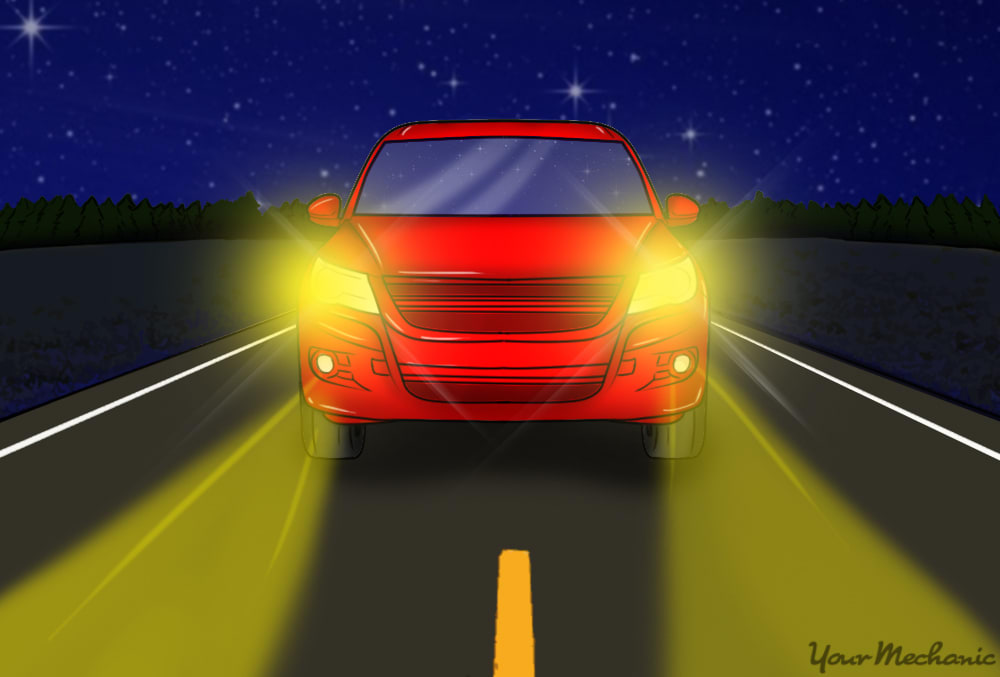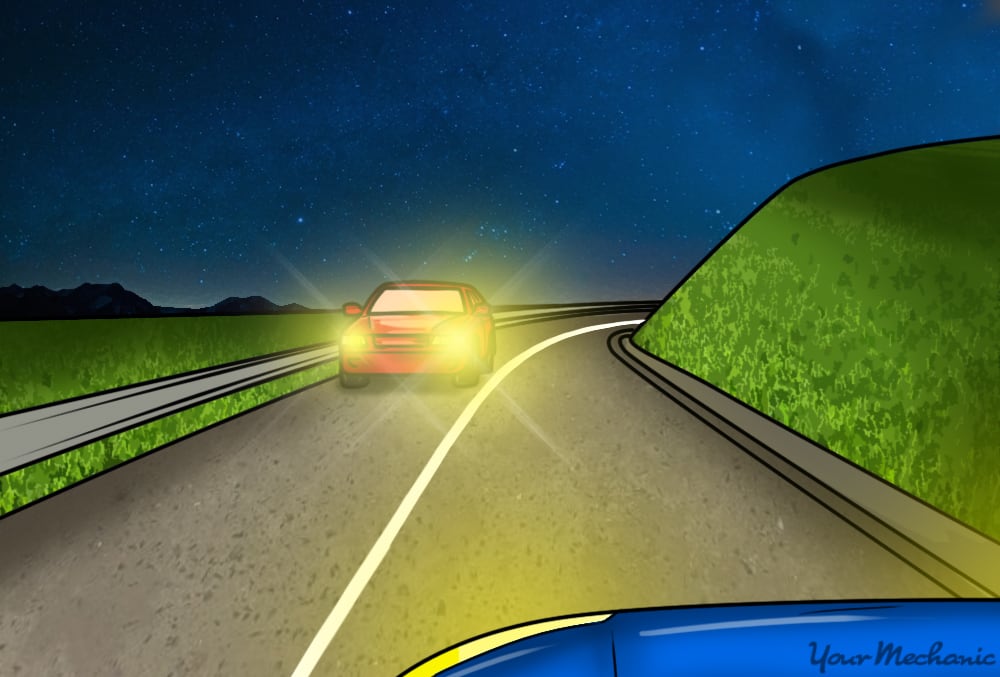

Driving at night is hard enough without having to deal with glare. Glare is usually caused by dirty windows or mirrors, bad vision, and the improper use of lights by other drivers. Luckily, you can take some steps to reduce glare, keeping you safer on the road at night.
Part 1 of 4: Clean the front windshield
Materials Needed
- Glass cleaner (such as Goof Off)
- Mesh sponge pad
- Microfiber towels
- Squeegee (optional)
A great way to cut down on nighttime glare while driving includes cleaning your front windshield and other windows. When glass surfaces are dirty or streaked, any light that hits them can scatter, creating glare. Dirty windows also reduce visibility and make it harder to see objects on the roadway. It is also important to clean the inside of the glass, as well as the outside window surfaces.
- Warning: You should also keep your window glass in good repair, especially the front windshield. If you notice any chips or cracks, it is best to have the front windshield repaired as soon as possible.
Step 1: Initial cleaning. Remove any hardened substances first.
Before attempting to clean the glass surface, make sure to remove any stuck-on bugs, tree sap, or other dried-on substances.
You might have to purchase a heavy-duty remover, such as Goof Off, to remove substances such as sap or tar.
Once you spray the remover on the hardened substance, let it soak in for about 10 minutes.
Once the substance has softened, use a mesh sponge pad to scrub the hard-to-remove debris.
Rinse the windshield with clean water. You should consider using a hose to ensure that you remove all of the remover before proceeding.

Step 2: Clean the exterior glass. After you have removed all of the bugs, sap, and tar, it is time to clean the windshield properly.
Start by lifting the wiper arms to their upright position to give you full access to the windshield.
Working on half of the windshield at a time, spray glass cleaner directly onto the glass surface.
Using a microfiber towel, wipe the cleaner off of the windshield. Use a vertical wiping pattern, followed by a horizontal pattern for best results.
Repeat the same process on the other side of the windshield.
Step 3: Clean the interior glass. Once the outside of the windshield is cleaned, it is time to wipe down the inside of the glass.
The easiest way to clean the interior glass is to spray the glass cleaner onto a microfiber cloth and wipe in sections using the glass cleaner-wetted cloth.
Keep cleaning the interior windshield in sections until the whole windshield is clean.
- Tip: In addition to the windows of your vehicle, it is important to clean or replace the windshield wipers occasionally. Grime and dirt build up on the wiper blade over time and can leave streaks on your front windshield when used.
Step 4: Clean other glass surfaces. Using the same process detailed above, clean the rest of the windows and other glass surfaces in your vehicle.
Start with the exterior and then clean the interior.
Finish by cleaning any mirror surfaces, including the side and rear view mirrors.
Part 2 of 4: Adjust your mirrors
Another way to reduce glare while driving at night is to adjust your mirrors. A properly adjusted mirror can help to keep the glare of the headlights of vehicles behind you out of your eyes.
Step 1: Adjust the side mirrors. Start by adjusting the side mirrors.
Adjust your driver's side mirror by leaning your head against the left side window glass. Adjust the mirror, using the controls, so that the side of the car is barely visible in the right side of the mirror.
You can adjust the passenger's side mirror by leaning over until your head is over the center console. From that position, set the mirror so you can barely see the side of the car in the left side of the mirror.
Keep in mind, if the vehicle lacks controls to remotely adjust the mirror, then you need to find someone to help you when adjusting the passenger's side mirror.

Step 2: Adjust the rearview mirror. Next, adjust the rearview mirror.
If the glare of the headlights of the vehicles behind you proves too much, then just flip the rearview mirror from day driving mode to night mode.
A switch on the bottom allows you to angle the mirror so that you can still see the vehicles behind you at night without all of the resulting glare.
Some vehicles even have powered mirrors that allow you to do the same thing at the touch of a button. Check your operator's manual for more information.
Part 3 of 4: Don't look directly at oncoming traffic
Sometimes, even after you have cleaned all of your windows and adjusted your mirrors, you can still see glare from the headlights of oncoming vehicles. Most often this is a result of improper use of headlights or badly adjusted headlights. In cases such as this, you can choose from a few options to deal with the glare.
Step 1: Oncoming traffic glare. Avoid looking directly at oncoming traffic at night.
Instead of looking at the oncoming vehicles at night, look down and to the right. Focus on the white line on the side of the road if available and use your peripheral vision to monitor the position of the vehicle until it is past you.
You should not have this problem with all vehicles that you pass, so use your best judgment when driving.
For roadways without a white painted line, focus on where the road meets the shoulder instead.
Part 4 of 4: Have your vision checked
Sometimes the problem doesn't lie with the other vehicles or our own vehicles at all. As we age, our vision deteriorates to the point where we might need to get glasses. If you notice that your vision changes, get your eyes examined by an optometrist.
Likewise, as we age, we need to visit the eye doctor more often. The American Optometric Association recommends most adults should get their eyes checked at least every two years. If you are over 60, then you should get your eyes checked annually.
Step 1: Visit the eye doctor. If you notice any change in your vision, visit an optometrists to find out your options.
The eye doctor should determine if you are far- or near-sighted and issue you a prescription for corrective lenses.
If glare is still an issue, talk to an eye-wear professional about getting an anti-glare coating for your glasses. This should help cut down on the amount of glare you encounter while driving at night, making it safer for you to drive.
Encountering glare while driving at night can cause you problems. Fortunately, you have a few steps you can take to help reduce the amount of glare you have to deal with, including making sure all of your windows and mirrors are clean, adjusting your mirrors properly, using driving methods helpful to driving against oncoming traffic at night, and making sure you are properly outfitted with glasses if needed.





